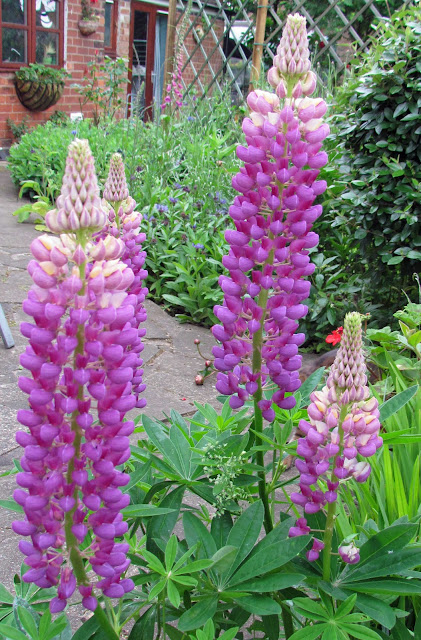
 I attacked the large Laurel a few days ago. It sprawled a bit when we bought the place and its dark interior made a great den for the kids. They enjoyed jumping about on one thick springy branch until one day it snapped. Over the years it rooted itself and grew into a separate shrub. It was taking over ...well, this week I reclaimed my garden.
I attacked the large Laurel a few days ago. It sprawled a bit when we bought the place and its dark interior made a great den for the kids. They enjoyed jumping about on one thick springy branch until one day it snapped. Over the years it rooted itself and grew into a separate shrub. It was taking over ...well, this week I reclaimed my garden.
Today it was the Lilac's turn. It had to go because it had gradually fallen over. Last year I had to saw off a few feet as it was leaning right over a path. The weight of the flowers this year was too much for the weaken roots. So I now have two bare patches. Lovely! They both look unattractive at the moment but that's part of the fun. Do I want to fill them with plants? Reorganise our seating arrangements? Change the direction of a path? I haven't decided yet.
 |
| Jazz |
The best bloom in the garden right now is this pink peony. There are nine or ten flowers growing next to blue cornflowers and white and pink foxgloves. A cheerful, pretty border.
The Oriental Poppies have finished but the large frilly poppies have taken over. It's such a shame they drop their petals so quickly.
April to June has been the wettest second year quarter since records began. This Thursday was a memorable day ... I went paddling down the lane in my wellies there was SO much water. Other people couldn't enjoy it like I did as they got flooded out.
Visit Helen at The Patient Gardener for more end of the month gardens.














































